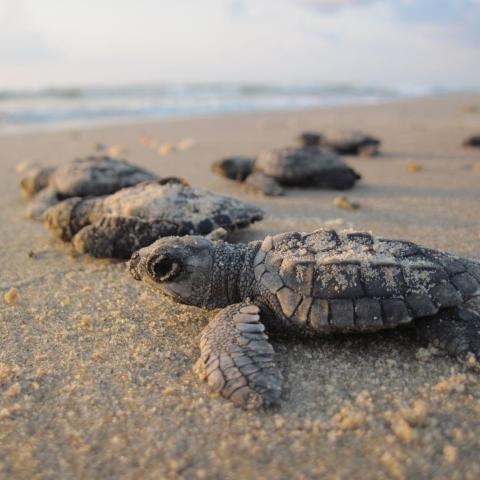
Many sunscreens contain chemicals that can harm coral reefs and other marine life in national parks/USGS
Sunscreens can be toxic to the marine environments of Virgin Islands National Park, Biscayne National Park, Everglades National Park, and other marine parks, as some ingredients are poisonous to coral reef ecosystems.
While the U.S. Virgin Islands government earlier this year banned the importation, sale, and possession of any sunscreen product that contains the active ingredients of oxybenzone, octinoxate, or octocrylene, the National Park Trust and Caribbean Sol have joined forces to promote safer sun care products.
It is estimated that up to 14,000 tons of sunscreen enter marine environments each year, according to the Surfrider Foundation. This is done directly through public visits or even while showering off chemicals found in these products straight into the waters.
Many sunscreens carry ingredients such as oxybenzone (Benzophenone-3) that harms marine life. According to the National Park Trust, such ingredients have caused coral bleaching, algae blooms, and health problems in fish and dolphins. In addition, these products are often sold in plastic packaging that, when discarded, pollutes oceans.
Caribbean Sol, an all-natural sun and skincare brand, uses organic aloe leave, Kukui oil, zinc and other natural ingredients in its products to block harmful sun rays and condition your skin.
Prof. John Fauth of the University of Central Florida, a scientist who has been studying this problem, points out the bigger picture of sunscreen pollution and coral reefs.
“Petroleum-sunscreen chemicals exacerbate the impacts of increased ocean temperatures and sunlight - two factors associated with climate change. Oxybenzone and these other chemicals can make corals more susceptible to bleaching and disease – reducing their resiliency to climate change events," he has said. "The tourism industry understands that managing sunscreen pollution also means managing climate-change impacts.”
Through a nationwide campaign, the National Park Trust and Caribbean Sol are working to promote responsible sun safety for people who visit national parks, public lands and waters.
The goals of the campaign are to:
● Identify sun-care products that are safe to use, and will not harm parks, coral reefs, and public waterways.
● Understand the plastics pollution issue facing parks and how they can help address this issue; and
● Plan outdoor experiences that are safe, enjoyable and environmentally friendly.
Preserving coral reefs through environmentally safe sun protection products will help protect one of the most valuable ecosystems in the world. Coral reefs are highly biodiverse marine areas, supporting thousands of species. In addition, they provide billions of dollars in economic and environmental services, such as food, coastal protection, and tourism, according to the National Park Trust.
Caribbean Sol also provided the following support to the National Park Trust:
● A National Educational Program with Buddy the Bison about chemicals found in sunscreen
● Helping the National Park Trust acquire more land for the National Park Service and sending more kids to parks; a portion of a sunscreen transaction generated from their audience is going back to the Trust.
● Having conversations about implementing a turn-in program to return chemical-based sunscreens at retail outlets and purchase a Carribean Sol at a discount.
● Promoting a leave-no-trace attitude in the parks with 100 percent sustainable sunscreen tubes that are made of sugar cane.
Frederic J. Larue, Caribbean Sol's global director of sales, said he was amazed to visit Yosemite National Park last fall and not be able to find one suncreen that had all-natural ingredients.
"How can this be possible that NPS does not mandate something so simple as sunscreen to be prohibited in their national parks if they contain chemicals known to have a negative effect on people, body of water, river, and reef,” Larue said.
To protect national parks and waters, consider the following when purchasing sunscreen:
● Avoid aerosols: spray-on sunscreens create a chemical cloud.
● Avoid sunscreens that contain harmful chemicals such as Oxybenzone, Benzophenone-1, Benzophenone-8, OD-PABA, 4-Methylbenzylidene camphor, and 3-Benzylidene camphor.
● Opt for mineral sunscreens that use ingredients such as zinc oxide or titanium dioxide, but remember that not all mineral sunscreens are safe.
● If unsure about the reef-safety of a product check the Protect Land + Sea Certification.




 Support Essential Coverage of Essential Places
Support Essential Coverage of Essential Places






